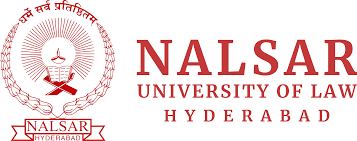A case study of “Rajive Raturi vs. Union of India (UOI) and Ors.”

~ By Aditya Gonapa
Case Citation
- Case Title: Rajive Raturi vs. Union of India (UOI) and Ors.
- Citation Reference- 2024 INSC 858
Court Name– Supreme Court of India.
Date of Judgment– 8th November 2024.
Court Bench– Hon’ble Dr Dhananjaya Y Chandrachud, CJI.
Parties Involved:
- Petitioner: Rajive Raturi
(A visually disabled person working with a human rights organization)
- Respondents:
Union of India and Ors. (Various government ministries, departments, and agencies)
Introduction:
In a 2005 writ suit, visually impaired human rights campaigner Rajive Raturi asked the court to order the government to guarantee accessibility and safety in public areas that include highways, transit systems, and facilities for people with visual impairments. Disability rights were then regulated under the Persons with Disabilities Act of 1995, which was subsequently superseded by the 2016 Rights of Persons with Disabilities Act.
In one of the famous judgments Disability Rights Group v Union of India, The Hon’ble Supreme Court in the year 2017, Justice Arjan Kumar Sikri proposed eleven action points for all the states, union territories and the Union of India to promote accessibility for the people with disabilities and to enforce compliance of rules and standards in Rights of Persons with Disabilities act 2016.
Facts of the Case
The Supreme Court requested the Centre for Disability Studies of Nalsar University of Law in November 2023, to prepare a detailed report within 6 months to assess compliance with regards to the Rights of Persons with Disabilities Act 2016 and to suggest recommendations to completely implement the Accessible India Campaign, which aims to make government buildings, airports, train stations, public transport, government websites, public documents, and the ICT environment accessible.
Following the Court’s directions ‘Finding Sizes for All: A Report on the Status of the Right to Accessibility in India’ was the title of the report that NALSAR-CDS submitted.
The report was based on surveys, expert interviews, and personal experiences, documenting accessibility barriers across different areas.
NALSAR-CDS prepared its report without financial support and consulted experts across 14 states and 3 Union Territories for six months.
The Ministry of Social Justice and Empowerment has until December 15, 2024, to pay NALSAR-CDS ₹50,000,000 for its work.
The Issue Involved:
The core and central issue is ensuring proper, adequate, and safe accessibility for Persons with Disabilities, especially those with visual disabilities, which involves:
- Public places (roads, government buildings)
- Transport systems (buses, trains, airports)
- Information and communication technology (government websites, public documents)
The case questioned the government’s slow and inadequate implementation of accessibility standards.
In its 2017 judgement, -The Court strongly criticized this lack of seriousness, emphasizing that more than a year had passed since the original judgment. It reminded the authorities that the Rights of Persons with Disabilities Act, 2016 legally requires them to provide necessary facilities for people with disabilities within set timelines. The Court clarified that States and Union Territories cannot ignore their duty to ensure these rights.
Arguments/Submissions by Petitioner and the Respondent
Petitioner’s Arguments:
- Access is a Fundamental Right:
Safe and independent mobility is essential to the dignity and equality of visually impaired persons. - International Obligations Ignored:
Despite India being a signatory to multiple international conventions (UNCRPD), compliance was poor. - Statutory Violations:
Provisions of the Disabilities Acts (1995 and 2016) mandated barrier-free environments but were not effectively implemented. - Specific Demands:
The petitioner laid out detailed suggestions such as:
- Auditory signals at traffic lights
- Tactile paving and guiding blocks
- Braille signage at public transportation hubs
- Designated ticketing counters and disabled-friendly coaches
- Comprehensive retrofitting of public buildings
Respondent’s Arguments:
- Work in Progress:
The government argued that initiatives like the Accessible India Campaign (AIC) were underway. - Reports on Progress:
Status reports were submitted outlining accessibility audits, retrofitting plans for buildings, and adaptation of transport facilities. - Financial and Logistical Constraints:
Some delays were attributed to the scale of the initiative and resource allocation challenges.
Judicial View:
Justice Arjan Kumar Sikri in the case of Disability Rights Group v Union of India[1] referred to the case of State of Himachal Pradesh v. Umed Ram Sharma[2] which was adjudicated in 1986 where the Supreme Court held that the right to life under Article 21 includes the right to accessibility.
In accordance with Articles 14, 19, and 21, which guarantee equal access to public spaces, services, and information, Article 19 safeguards freedom of movement and expression, and Article 21 guarantees the right to live with dignity, the Court also emphasised the importance of accessibility in guaranteeing the full participation of individuals with disabilities.
The verdict at the case at hand also referred to Article 3 and Article 9 of the United Nations Convention on Rights of Persons with Disabilities which stresses the need to remove both physical and social barriers to ensure full social inclusion and full participation of People with Disabilities.
The court also referred to Article 13 of the Universal Declaration of Human Rights Freedom, which requires accessible transport and public spaces, and Article 19 of the UDHR, which requires Accessible Information and Communication.
This supports the idea and philosophy that accessibility is an essential component of current human rights rather than a stand-alone right. It guarantees everyone, including those with disabilities, equality and dignity.
The European Economic and Social Committee (EESC) acknowledged Article 9 of the CRPD as a human right in and of itself in its 2014 conclusion.
The Court acknowledged in Lárusson v. Iceland (2022) that the right to private and family life under Article 8 of the European Convention on Human Rights includes the right to accessibility.
Nalsar’s Report
NALSAR reported that 14 States and 5 Union Territories did not reply to the request for accessibility information submitted to governments, courts, and prisons, while only 14 States, 3 Union Territories, and the Union Ministry of Social Justice and Empowerment did.
In one of the Pilot Surveys conducted by the Nalsar-CDS with Ms. Roma Bhagat and Associates, it was identified that no responses were received from the High Courts of Allahabad (both benches), Madhya Pradesh (all benches), and Jammu & Kashmir and Ladakh (Srinagar). The Madras High Court (Madurai Bench) responded after data analysis, and data from the Delhi High Court remained unverified.
The fact that many states do not formally recognise all disability categories under the RPWD Act is one of the main problems that one would find intriguing. This results in underreporting and a lack of services.
It is disheartening to find that the states and the judicial system being the guarantors of citizens’ fundamental rights, where accessibility is seen as one of them under Article 21, are not acknowledging the myriad categories under the RPWD act effectively excluding one section of the society to which much need and attention is needed.
Additionally, it is palpable that the Supreme Court’s directions are explicitly disregarded by the High Courts and lower courts given the fact that the Supreme Court’s decision is binding on all courts under Article 141 of the Indian Constitution that in turn, gives an impression to the commoners that the law is not the supreme.
One more major issue that is pertinent and one should take note of is the accessibility of educational institutions as a survey of 947 parents across 23 states revealed major challenges in education for children with disabilities.
As per the report submitted by NALSAR, 56% of students were enrolled in primary school, but enrolment in higher grades steadily decreased, according to Nalsar’s report, “Finding Sizes for All: A Report on the Status of the Right to Accessibility in India.” Despite being enrolled, 4% never went to school for a variety of reasons, such as transportation issues or school policies that discourage attendance. Just 2% of pupils had access to restrooms at school. Many were unable to get midday meals or take part in assemblies. Sixty-four percent had problems because of inaccessible formats, and just seventeen percent received instructional materials.
Some feasible solutions to address these problems would be to build more schools in remote and rural areas with buses equipped with ramps, handrails to address locomotor disabilities and audio systems and tactile guidance paths, as in Japan where tactile guidance paths across every metro station, bus station and sub-way, so that children with blindness and color blindness could access buses school ecosystem independently.
Initiatives by the Union and State governments that tend to create learning materials in accessible formats, including Braille, and audiobooks, among others that cater to the specific needs of a child, which also serves the principle of reasonable accommodation in this regard.
The Supreme Court also ordered the creation of a committee to suggest ways to make educational infrastructure and teaching methods more accessible within a set timeframe is a commendable step concerning this issue
The legal discrepancy between Rule 15 [Accessibility Rules] and the RPWD Act is one of the many other difficulties pertaining to many other sectors that the report has addressed.
The RPWD Act has several provisions that mandate adherence to accessibility guidelines, one of which is as follows:
- Section 40: The Central Government must set accessibility standards.
- Section 44: New structures must adhere to these guidelines before construction, and if the building plan does not satisfy accessibility requirements, approval will not be granted.
Since the rules took effect on 15 June 2017, these deadlines have already passed.
Rule 15(1) is titled “Rules for Accessibility” and uses the word “shall”, meaning the standards in clauses (a) to (p) are mandatory. However, when examining the actual standards under Rule 15(1), it becomes clear that many are guidelines rather than strict rules. The use of the term “guidelines” instead of “rules” is not just a wording choice, it reflects the flexible nature of these documents.
Court’s Directions
- Rule 15(1) is invalid (ultra vires) as it fails to align with the RPWD Act’s intent.
- The Union Government must define clear mandatory rules under Section 40 within three months.
- This process should involve separating enforceable rules from flexible guidelines in Rule 15.
- Consultation with stakeholders, including NALSAR-CDS, is required.
- It is important to keep up current accessibility initiatives, such as the Accessible India Campaign. Rule 15 must, however, also clearly define a set of non-negotiable rules.
Conclusion
While one can say the court’s directions are commendable concerning Rule 15 and its inconsistency, there should be more emphasis by the states and the judicial system, on recommendations given by Nalsar on various other aspects that were covered in detail as these barriers make children with disabilities feel excluded and additionally, there are high probabilities that the disability of an individual worsens when it is intersected with other forms of marginalization.
Mike Oliver, a renowned disability rights activist argues that disability is created by societal barriers and not just a person’s condition.
It is the bounded duty and responsibility of the state to reduce the various physical and social barriers faced by persons with disabilities by providing them with reasonable accommodation and accessibility to the extent possible.
Author’s Bio- Aditya Gonapa is a first-year law student at NALSAR University of Law, Hyderabad.
References
[1] Disability Rights Group v Union of India [2018] 2 SCC 397.
[2] Himachal Pradesh v. Umed Ram Sharma AIR 1986 SC 847.

